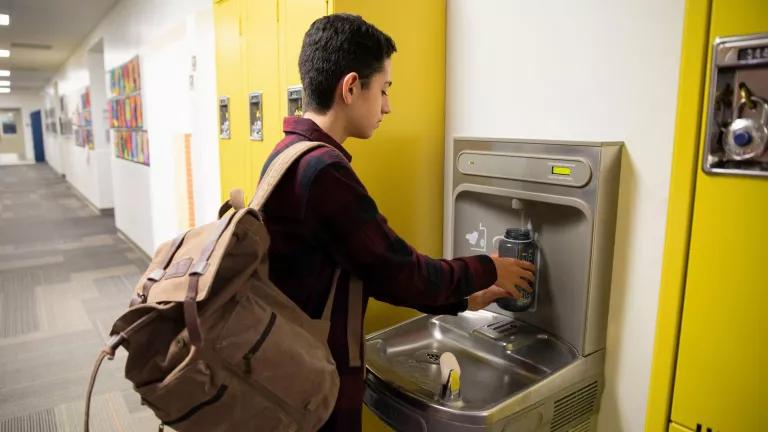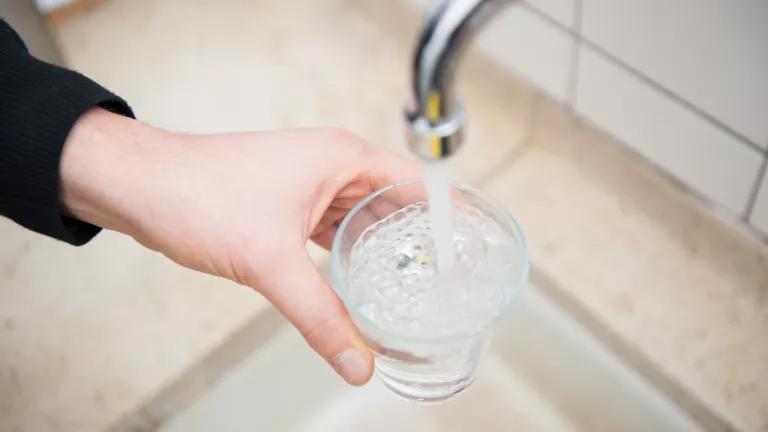New Pipes Equal Safer Family
I just had my lead service line replaced, and I couldn’t be happier.

Sam Gilchrist (front row, second from left) with the lead service line replacement crews from Plumbers Local 3, Operating Engineers Local 9, and Laborers Local 720
Courtesy of Sam Gilchrist
It feels like Christmas in…August! On Friday, August 2, Denver Water officially replaced my lead service line. My family and I have been waiting for three years for this to happen, and it finally did! Also, as a former union leader, I’m happy to report that the crews who did the repairs were all union. Special thanks are due to my friends at Plumbers Local 3, Operating Engineers Local 9, and Laborers Local 720 for the great work! They were even nice enough to take a picture with me (can you guess which one is me?).
Denver Water has a robust program for replacing lead service lines. Replacement comes at no direct cost to the homeowner. Denver Water replaces the entire service line and provides filters to homeowners prior to and immediately after replacement. In 2022, Denver Water received $76 million in federal funding from the Colorado Drinking Water State Revolving Funds in the form of a low-interest loan allowed by the Bipartisan Infrastructure Law, according to an article from Water Online. The article also points out that $40 million of this funding was already forgiven, which further reduces the cost to Denver Water customers. This influx of federal funding helped turbocharge the program and helped my family see our lead service line replaced sooner than expected.
As the father of a four-year-old son, George, I am particularly concerned about the health impacts of lead exposure in children. Information about these serious health effects is readily available on the website of the world-renowned Mayo Clinic and tells how “even small amounts of lead can cause serious health problems. Children younger than 6 years are especially vulnerable to lead poisoning, which can severely affect mental and physical development.” Public health authorities all agree that there is no safe level of lead exposure.
Since moving into our current home in September 2021, we’ve been filtering our water to avoid exposing our son to lead in our drinking water; we conducted multiple readings over the years, with results ranging from 3 to 15 parts per billion (ppb). Thankfully, Denver Water provides NSF/ANSI 53 certified filters and pitchers for all homes awaiting lead service line replacement and for the six months following replacement.
The process for replacing our lead service line was simple. Earlier this summer, Denver Water reached out to let us know our lead service line was going to be replaced before the end of August. Between that time and today, we received multiple emails, text messages, and phone calls, providing updates and telling us what to expect on replacement day. A week before the replacement occurred, a representative from Denver Water paid us a house call to inspect the area where our service line entered the house, provide us with literature on what to expect, and ensure we had completed the requisite consent form.
Twenty-four hours before replacement, a crew prepped the exterior site by removing soil and asphalt. I prepped the interior of our home by putting down plastic sheeting and taping it off to avoid damage to our basement den and George’s playroom.
Around 7:45 a.m. on Friday, the replacement crew was ready to get to work (George was especially excited to watch the workers and cool construction machines). They started by drilling horizontally through our yard and into our basement. They used the same drill to snake the new copper service line, starting from inside our home. After that, two crews worked simultaneously to connect the line to our existing interior plumbing, install a new water meter outside, cap the old lead service line, and connect the new copper line to the water main. After that, they filled in the exterior holes, cemented the area where the new line entered the house, and showed me how to flush out our plumbing system. The entire process took about three hours.
Most people don’t get as excited as I do when their lead service lines are being replaced, but they should—everyone deserves clean drinking water. I am proud to see our state, my water utility, and our federal government making lead service line replacement a priority, and I hope the U.S. Environmental Protection Agency will require the quick replacement of lead service lines at no cost to the consumer in its upcoming rulemaking. This will help ensure that we all have access to clean water, and other places should quickly follow Denver Water’s example.





